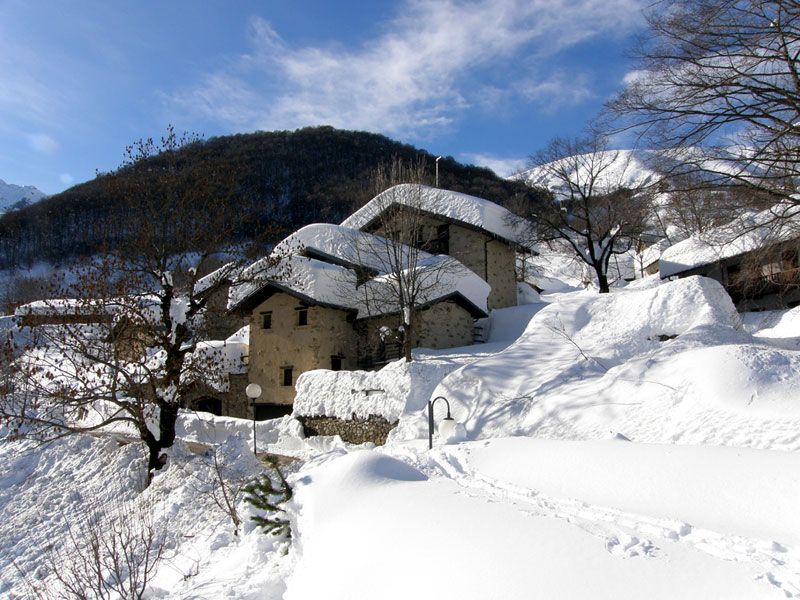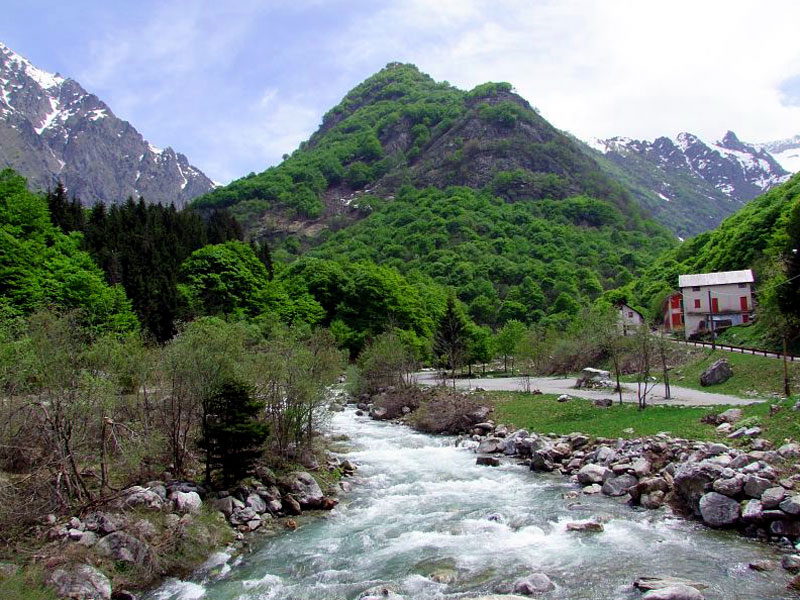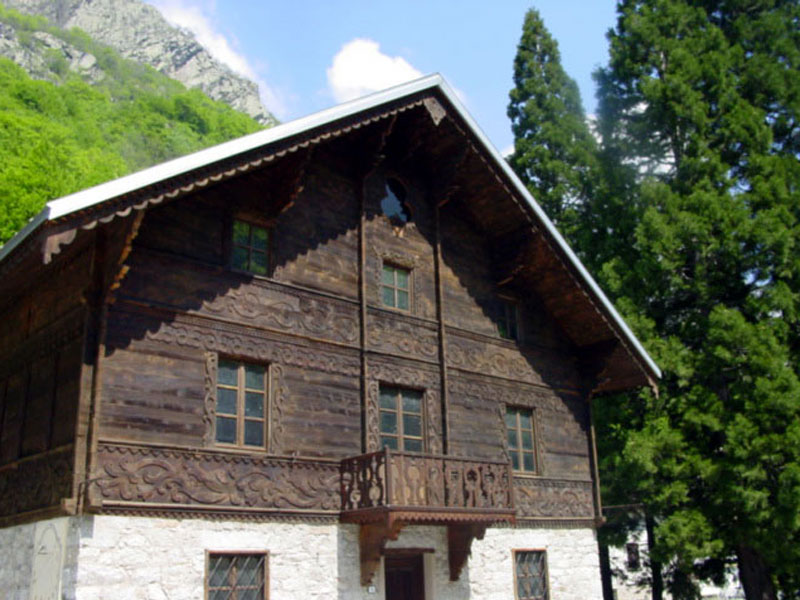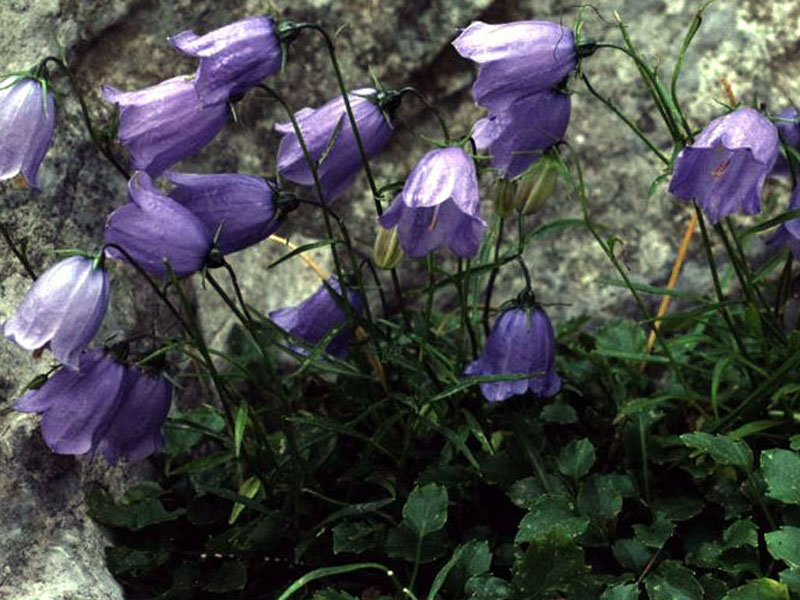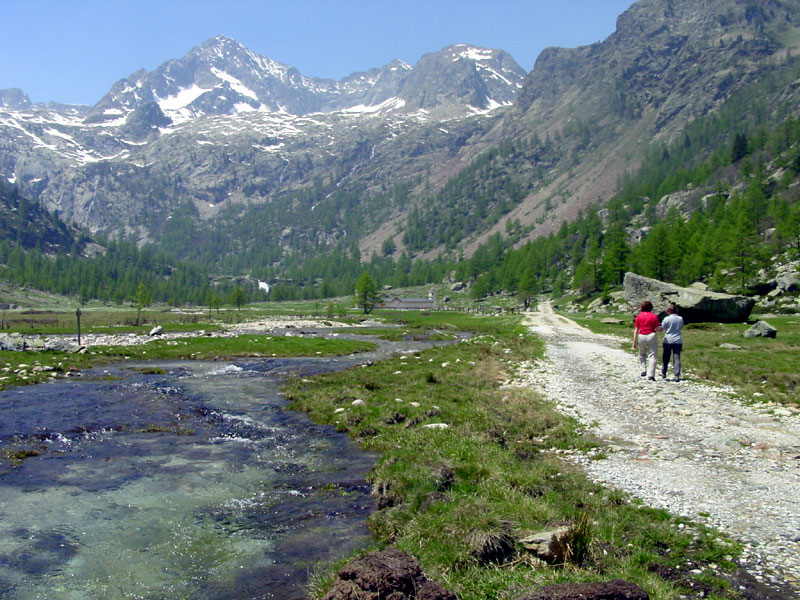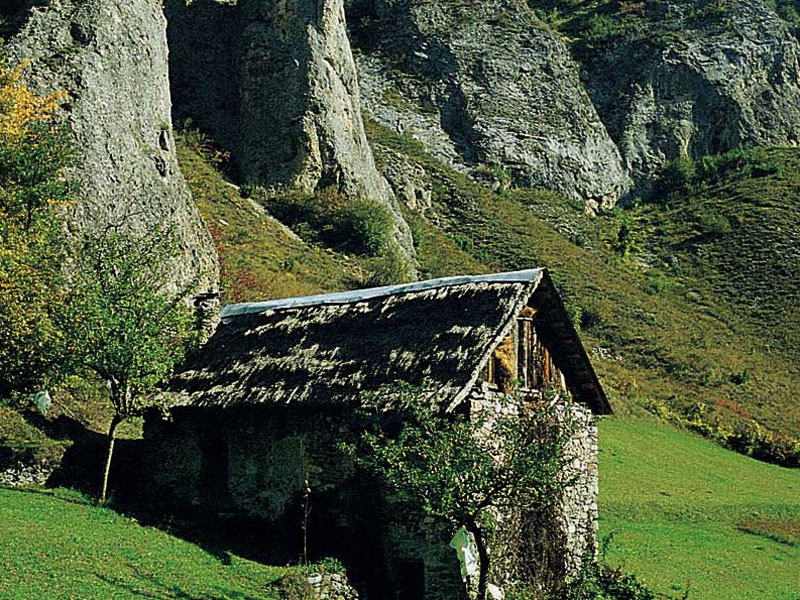Points of Interest
Palanfrè
Arriving at Palanfrè after traveling along the little road up to the Valle Grande through the trees gives you a magnificent sensation. The landscape opens with wide grasslands framed by the pale calcareous rocks of the summits. The small village of Palanfrè, which is protected from avalanches by a beech tree wood, has preserved the features of a traditional village. Houses have been renovated maintaining the local building style. The Nature Trail is an hour's walk through the beech wood, which has been preserved since the 19th century and is therefore reach in ancient and contorted specimens.
San Giacomo di Entracque
San Giacomo is situated at the fork in the river where the Moncolomb and Barra valleys meet at a height of 1,213m. It was chosen by the Savoia family to build a hunting lodge. Today the buildings, surrounded by a wonderful mature beech forest, are used for summer camps. San Giacomo is the departure point for a number of itineraries, among which the beautiful and easy walk (about 1 hour) leading to Piano del Rasur. It follows an old military road which winds through the wood to reach a open pasture where you can enjoy a spectacular view over the glaciers of Mount Gelàs group. The itinerary offers almost always the opportunity to sight chamois and marmots.
Terme di Valdieri
The locality is situated at the mouth of Valloni del Valasco and Valletta and at the foot of Mt. Matto at 1,368m, where it is possible to find a number of thermal springs with temperatures between 26°C and 69°C. These waters were already known at the times of the Romans, but began to be exploited in the late 16th century. In 1857, Vittorio Emanuele II inaugurated the modern era of the spa facilities by laying the first stone of the great Hotel Royal. Nowadays the facilities are provided with sophisticated equipment for treatment, gymnasium, thermal water swimming-pools, and fitness hall. The Baths also include two 19th century "Swiss style" chalets built by Vittorio Emanuele. The most important one is is called "Casa della Bela Rosin": according to the legend, the king used to spend happy hours there with the young Maria Rosa Vercellana, who was later to become the Countess of Mirafiori.
Valderia Botanical Garden
The Gardens are situated at Terme, and have both scientific and teaching purposes. Their name derives from the endemic Viola valderia, a flower which was found by Carlo Allioni along the gravel shore of Gesso which is now part of the garden. The Garden houses over 450 species, which are identified by special labels and grouped according to their natural environments: siliceous and calcareous rocks, cliffs and the detritus, grassland, stream, peat bog, gravel shore, spring, grazing land, pen, shrubs, and undergrowth.
Within the Garden there is the self-guided nature trail "Terme di Valdieri"
Piano del Valasco
It is one of the most charming places in the protected area, it takes about one hour on foot or by bike along a military roadway starting at Terme. Valasco is a large flat valley floor at 1,760m, scattered with larches and with a lively stream running through it and a magnificent waterfall at each end. This large plateau is surrounded by spectacular summits: the beauty of the place struck Vittorio Emanuele II so much that at the end of the 19th century he ordered a hunting lodge to be built here. It is one of the most important architectural features in the park.
Aisone Caves
Leaving the village of Aisone up the valley to the west there are a number of natural cavities which were used by man during prehistoric times (4800-3500 BC). The caves can be seen from the main road and by taking a brief walk in Vallone di Rio Borbone: after taking the road to Piron, take a dirt track on the right leading to a charming basin surrounded by conglomerate walls and towers; there is also an interesting barn to visit with its traditional rye straw roof.




